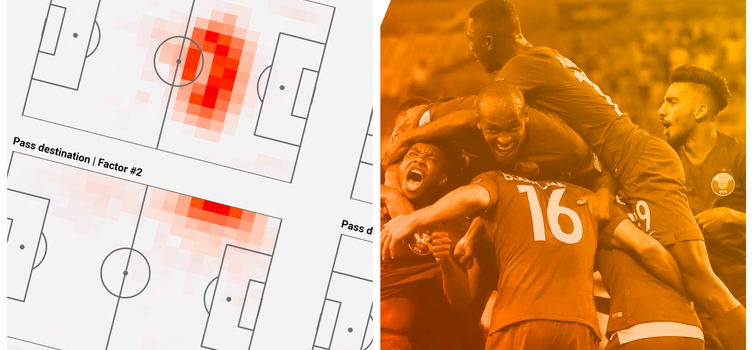Ben Mackriell: Why shape (not formation) matters

Written by Ben Mackriell — October 13, 2020
WE'VE been having a fascinating discussion internally at Stats Perform over the last 12 months about the following question: are formation and shape essentially the same thing?
Through conversations with coaches as well as carrying out our own analysis, the conclusion we've come to is that they are actually very different. Formation is essentially a set of data labels we’ve applied as coaches or analysts to try and quantify the position of players within a structure.
Because this is difficult to do dynamically, we tend to just say ‘we’re in a 4-4-2… we’re in a 5-3-2’ and so on.
This means formations are quite restrictive. The game - and the way we should analyse it - is dynamic though, which is why shape is the guiding principle of every coach’s football philosophy.
Because shape is dynamic, it changes. It’s dependent on where the ball is, or how a team is playing out from the back, or the types of passing patterns they’re using to move through the midfield, all of which will change a team’s shape in or out of possession drastically.
We all know this ourselves, from watching games.
Positions are also dynamic. We might label players as ‘right back’, ‘central midfielder’, ‘defensive midfielder’, but there are actually lots of different types of these positions.
This makes using the restrictive data labels of positions a problem, especially in the age of Sheffield United’s overlapping centre backs. They would be pretty difficult to quantify if we were sticking with the traditional label principles of positions.
Depending on your team's playing style, you will be asking very different things of your players depending on your principles of play.
When Pep Guardiola’s full-backs started to underlap and move to inside positions, it confused a lot of the industry. This was not how full-backs should play.
So at Stats Perform, we wanted to remove the bias that comes with these labels and look at the characteristics of players and how they perform the roles they’ve been tasked with.
We look at where they perform their actions on the pitch and then how successfully they do it, against the role they’ve been asked to fulfil.
Then we ask the following questions, which are all key indicators in determining a player’s role and their inputs to our models:
- How do they perform in different areas of the game?
- Are they safe with their passing options, or do they take risks?
- What is the reward for those risks?
- Are they a safe player in possession, or do they create high-value possessions that are leading to goalscoring opportunities?
- How are they involved in their team’s style of play?
We can simplify these inputs, create a role for that player and then work out who has similar characteristics based on all these inputs.
If Jadon Sancho left Borussia Dortmund, for example, then we could look at his characteristics and work out who fits them the best.
Memphis Depay, Ferran Torres… what characteristics do they have that are similar?
Ratings systems have been around for a long time and I’ve generally been against them as a principle because they tend not to be very well weighted.
We need to be evaluating a player’s performance much better than that. We’ve developed a metric called Possession Value that takes into account every action and quantifies the impact they have on goalscoring opportunities.
We also want to simulate all of these scenarios and assist the coaches where they have to make difficult decisions.
If Dean Henderson faced exactly the same shots David De Gea did last season, how would he have performed in those situations? From the modelling we have done, Henderson would actually have conceded six more goals.
We are able to predict and simulate those situations and say 'what if this player had this role in this team?' This gives decision makers a lot more ammunition.
And we can start to look at the impact players could have on other players in a team, which his very exciting. Line-up optimisation assesses what impact a player's metrics and characteristics would have on team-mates if he was brought into a team.
Furthermore, it can assess the impact this player would have on overall team performance. With our modelling and AI solutions, we are trying to identify key situations and input different scenarios and simulate what would happen.
That’s exactly what coaches do in their own heads for every decision they make.
I’m not saying this is the answer to everything, nor that teams should be selected on these models. But if we can give coaches more confidence in the decisions they can make, because they can predict and simulate, I think it will have a huge impact.
- Ben Mackriell is VP of Pro Products for Stats Perform. Before joining the company in 2016, he worked for Burnley, Norwich, Reading and Fulham.






-1.png)





